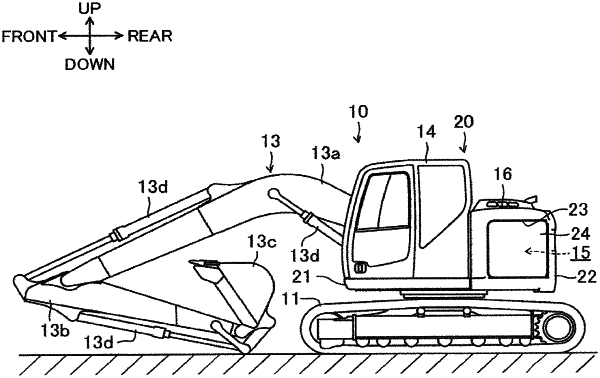| CPC E02F 9/0866 (2013.01) [B60K 11/04 (2013.01); F01P 1/00 (2013.01); F01P 11/10 (2013.01)] | 19 Claims |

|
1. A construction machine comprising:
an engine chamber;
an engine disposed in the engine chamber;
a heat exchanger disposed in the engine chamber;
an intake chamber communicated with the engine chamber and disposed independently of the engine chamber;
an intake tube connected to the intake chamber so as to provide communication between an inside and an outside of the intake chamber;
a cooling fan that sucks air outside the intake chamber into the engine chamber through the intake tube and the intake chamber to make the air pass through the heat exchanger; and
a dust receiving part, wherein:
the intake tube includes a connection part connected to the intake chamber, an intake port opened to the outside of the intake chamber, and a curved part having an inner wall surface positioned between the intake port and the connection part and curved, the inner wall surface including an outside inner wall surface allowing dust contained in the air sucked through the intake port to come into contact with the inner wall surface; and
the dust receiving part is disposed downstream of the outside inner wall surface so as to receive dust that has come into contact with the outside inner wall surface of the curved part to prevent the dust from entering the intake chamber.
|